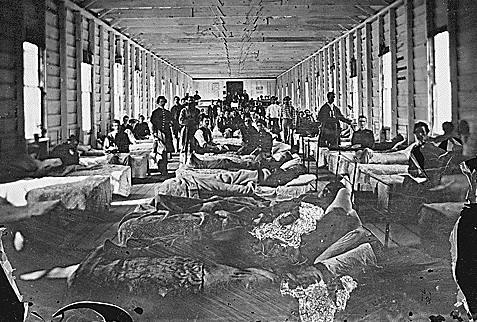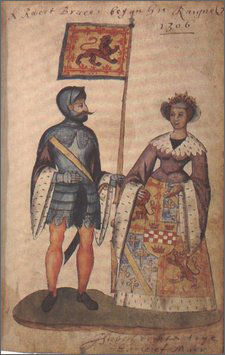I
have to keep reminding myself, how small the place was. It was less
than a mile via Whitechapel Road between Aldegate (above, middle left) and the London
Hospital (above, upper right). And from a midway mark on that road, less then a twenty
minute walk in any direction encompassed all of Whitechapel,
Spitafields and Waping, the three poorest parishes in London.
Contained within that tiny circle were some 800,000 hungry,
exhausted, sickly, desperate people, living short, brutal, filthy
lives. Capitalism offered them few opportunities, and the ones it did
demanded first that they take advantage of each other. Religion
offered only the peace of resignation. Justice was a tool the
powerful used to remain poweful .
Life, liberty and happiness were available only if you
could afford them. And the wealth of those that could rested largely on the
backs of the people of the East End of London. The Victorian age was defined by
its hypocrisy, the sins of its age no less gilded in London, than in
Mark Twain's America.
Thus
it was a short sad walk pushing the police ambulance from George Yard, a
few block where Wentworth began Montague Street where the mortuary (above, green box, lower left) a half block from the Whitechapel
Union Workhouse.
About 7:00 that morning the cart was admitted through the
Eagle Place gate (above) and then had to wait while the gate keepers sent for
Robert Mann, the 53 year old workhouse inmate who was authorized to
open the mortuary for incoming bodies.
In
his life Robert Mann had been a dock worker, but either through
injury or illness, Robert's mind was injured
and left easily confused. He was no longer able to hold a job. He had
lived in the Workhouse for almost a decade now. He helped in the
kitchen, and in the men's ward of the hospital, mopping up, removing
waste and bodies. That Tuesday afternoon, Robert opened the mortuary a
second time to admit two nurses. They stripped and washed the body of
the unknown murder victim, and were the first to clearly see the
brutality done to her.
When they were finished the nurses stood by
while a photo was taken of the victim's pale blood drained face. Then
they left the body under a sheet on the dissecting table in the post mortem room and Robert
Mann locked the door behind them.
During
late Tuesday afternoon, 7 August, 1888, Detective Inspector Edmund
Reid had gone back to the Blackwell Building on George Yard (above), and
started knocking on doors. First he re interviewed the Hewitts, the
building superintendent and his wife, who lived on the ground floor.
They confirmed what they had told Constable Barrett. The dead woman
had never been a resident, and had never before been seen about the
building.
Inspector Reid then spoke to the woman in Apartment 37,
Louisa Reeves, the wife of John Saunders Reeves, who had found the
dead woman at 4:45 or 4:50 that morning. Lousia Reeves told Detective
Reid there had been several fights on Wentworth street that Monday
night, as was to be expected, what with it having been a “Bank
Holiday”. It was the last holiday of the summer. The couple had
heard the first shouting about 11:30, and then again half past
midnight, and then a third fight broke out about 1:00 am. The couple
had watched from their balcony overlooking Wentworth Street, while
the police broke up all three brawls. one after another.
The
resident of Apartment 35, Mr. Alfred George Crow, made his living as
a licensed driver of a hackney cab. The Bank Holiday had been a busy
work day for the 25 year old, and he did not get home until 3:00 am
on the morning of Tuesday, 7 August. He had seen a “person” on
the stairs, whom he assumed was sleeping. Since this was not unusual, he took little note of it, going straight to bed. He did not realized
a murder had occurred until 9 that morning, when he had gotten up,
and gone out to buy either food or gin.
At
7:30 that night, Inspector Reid caught Mrs. Elizabeth Mahoney
returning from her job at the Stratford matchbook factory, just
behind the Workhouse. The 25 year old soft spoken woman and her
husband John lived in Apartment 47, directly above Alfred Crow. She
said they had spent the day celebrating with her sister, and had not
returned home until about 1:40 that Tuesday morning. Elizabeth had paused in
their apartment just long enough to take off her hat and cloak,
before going downstairs again to buy some dinner (or gin) at a chandler's shop one block north on Thrawl Street (above). Elizabeth said the
errand had taken no more than five minutes, before she came home
again, climbing the same staircase just before two in the morning.
She saw no one on the stairs, she said, living or dead, and did not
learn of the murder until ten that morning.
Inspector
Reid took note that no one heard any screams or shouting after one
that morning, despite the Hewitts apartment being at the foot of the
stairwell. And given Mr. Crow's and Mrs. Mahoney's testimony, the
murder must have occurred between 2:00 am and 3:00 am. Because of the
lack of calls for help, it seemed likely that the victim had known
her killer. But until he knew the name of the first, he had little
chance of finding the name of the second.
Reid
wrote up a description of the victim, and had it dispatched to the news papers, who would publish it the next morning. The female victim was
about 37 years old, 5 feet 3 inches tall, with dark hair and a dark
complexion, wearing an old dark-green skirt, brown petticoat, long
black jacket, brown stockings, a black bonnet, and side-sprung boots.
It was a proven, plodding police approach. But Inspector Reid was
about to be offered a short cut that would throw his case completely
off track.
The
red herring appeared in the form of Police Constable Thomas Barrett,
who showed up early for his Tuesday evening tour at the Leman Street station. Speaking to Inspector Reid, Barrett said he was bothered by an incident which
occurred while he was walking his beat at 2:00 am on that Tuesday
morning. He spotted a soldier loitering on Wentworth street (above), near the
entrance to George Yard. Barrett thought he might be a guard to insure no interference with a robbery going on in the alley. When Barrett asked what he was doing there, the soldier
confessed to “waiting for chum who had gone up the alley with a
girl.” Because he believed the soldier, and because of the
directive regarding street walkers, Barrett merely told the soldier
to move along, and then continued his patrol.
Barrett described the
soldier as a Private between 22 and 26 years
of age, about 5 feet 9 inches tall, with fair complexion, dark hair
and a small brown mustache turned up at the ends. He was also wearing
a good conduct badge. It had happened three hours before the body
was discovered, but Barrett was sure he could recognize the soldier
again. Might it not have something to do with the murder? Desperate
for a lead, Reid thought it might.
On
Wednesday, 8 August, Reid escorted Constable Barrett to the Tower, where members of the Guards were paraded for his inspection. Looking for the soldier he had encountered outside of George Yard Tuesday morning, Barrett picked out one man, and then another. Under questioning, both men proved to have separate but equally iron clad alibis Reid was frustrated, but not surprised. The lead had led nowhere.
That same morning, Wednesday, 8 August, 1888, Dr. Timothy Robert Killeen
walked the five blocks from his surgery to the Old Montague Street Mortuary
to autopsy the body of the woman from George Yard. He
was supposed to be assisted by a nurse from the Workhouse hospital
ward, but none showed up. So the doctor relied on mortuary worker
Robert Mann and his assistant James Hatfield, a 68 year old resident
of the Workhouse.
As usual for the Montague Street mortuary dissecting room (above) , conditions
were horrible. The lighting was bad, the room un-vented, and there was no ready source of water. Luckily it had
been a cool summer, because every surgeon in Whitechapel dreaded
doing an autopsy there in August.
Dr,
Killeen now counted 22 stab wounds (above). The left lung had been penetrated
in five places, the right lung in two places. The victim's fatty
heart had also been pierced. The liver had been penetrated five
times, the spleen twice, the stomach six times.
All but one of the
wounds had been inflicted by a pen knife, held, deduced Dr. Killeen ,
by a right handed person. But for some reason, on the death certificate (above), Dr. Killeen omitted
any details of the savage wounds to the victim's throat, or the slice
made just above her pubic bone.
Perhaps
the savagery of the assault on the woman was affecting him. Perhaps
it was the stench and dirty conditions in the mortuary. Perhaps
after three years laboring in the cesspit that was Whitechapel he was
finally feeling overwhelmed. If it was the latter, Dr. Timothy
Killeen would be far from the first or the last doctor to be "burned out" in Whitechapel. Within the year, Dr,
Killeen would return to his family home north of Limerick, Ireland.
He never wrote about his time in Whitechapel, nor his brush with the
murderer who would become known as Jack the Ripper.
-
30 -







































































